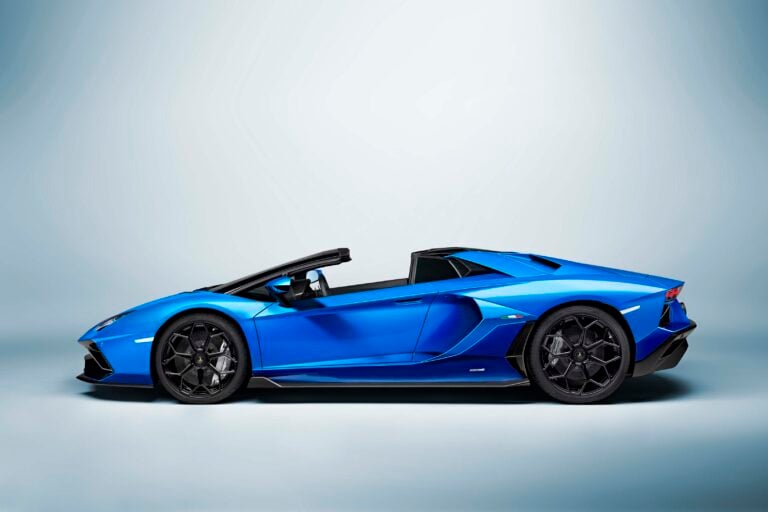UPDATE: Revuelto unveiled in full
Lamborghini has taken the covers off its hybrid Aventador replacement that’s called Revuelto.
After teasing the ‘LB744’ powertrain, chassis, and drive mode details (which you can read below), the Sant’Agatha supercar specialist has unveiled the Revuelto in full.
A plug-in hybrid powertrain built around a 6.5-litre petrol V12 develops 746kW, is hooked up to a carbon fibre chassis, and revised eight-speed dual-clutch transmission without a reverse gear.

Further details, including Australian timing and pricing, will be confirmed in the coming months.
Our original story, below, continues unchanged
The story to here
UPDATE March 21: Lamborghini has revealed all 13 drive combinations set to feature in the ‘LB744’ – the internal codename for its Aventador’s successor.
Snapshot
- Full reveal March 30
- 13 drive modes to best harness EV/petrol power
- Aventador’s successor packs 746kW
- Features 9250rpm red line, bespoke gearbox
- Carbon-fibre construction sheds weight
As detailed below, the LB744 will feature a petrol V12 combustion engine and a trio of electric motors for 746kW, all bolted to a chassis constructed largely from carbon-fibre.
With four power sources onboard, the Aventador’s replacement is a complex beast, and Lamborghini has developed 13 different drive combinations to harness its best attributes.

Recharge, Hybrid, and Performance are new for the LB744, and adjust how the powertrain works. The three new modes complement the existing Citta, Strada, Sport, and Corsa settings. That’s only seven modes on paper, but each car setting has multiple powertrain mode possibilities.
For example – Lamborghini says Citta (or City) has the chassis in a more cosseting mode and softer throttle. To prioritise low emissions, in Citta, the LB744 will run in either Hybrid mode – when there’s sufficient battery charge – or Recharge mode when electrons are running low.
Strada keeps the V12 engine putting away at all times, while Sport amps responses and tightens the chassis.

Only in Corsa mode, with the Performance powertrain selected, will the LB744 unleash all of its 746 kilowatts. Launch control features too, and drivers can disable ESC for track use.
On top of the drive modes, Lamborghini has released further details about the LB744. Its weight distribution has been optimised, resulting in a 44 per cent front/56 per cent rear balance.
Anti-roll bars have been stiffened by 11 per cent up front, and 50 per cent out back. There’s also a 10 per cent quicker ratio for the four-wheel-steer system than on the Aventador Ultimae, and even bigger OEM-spec Bridgestone rubber.
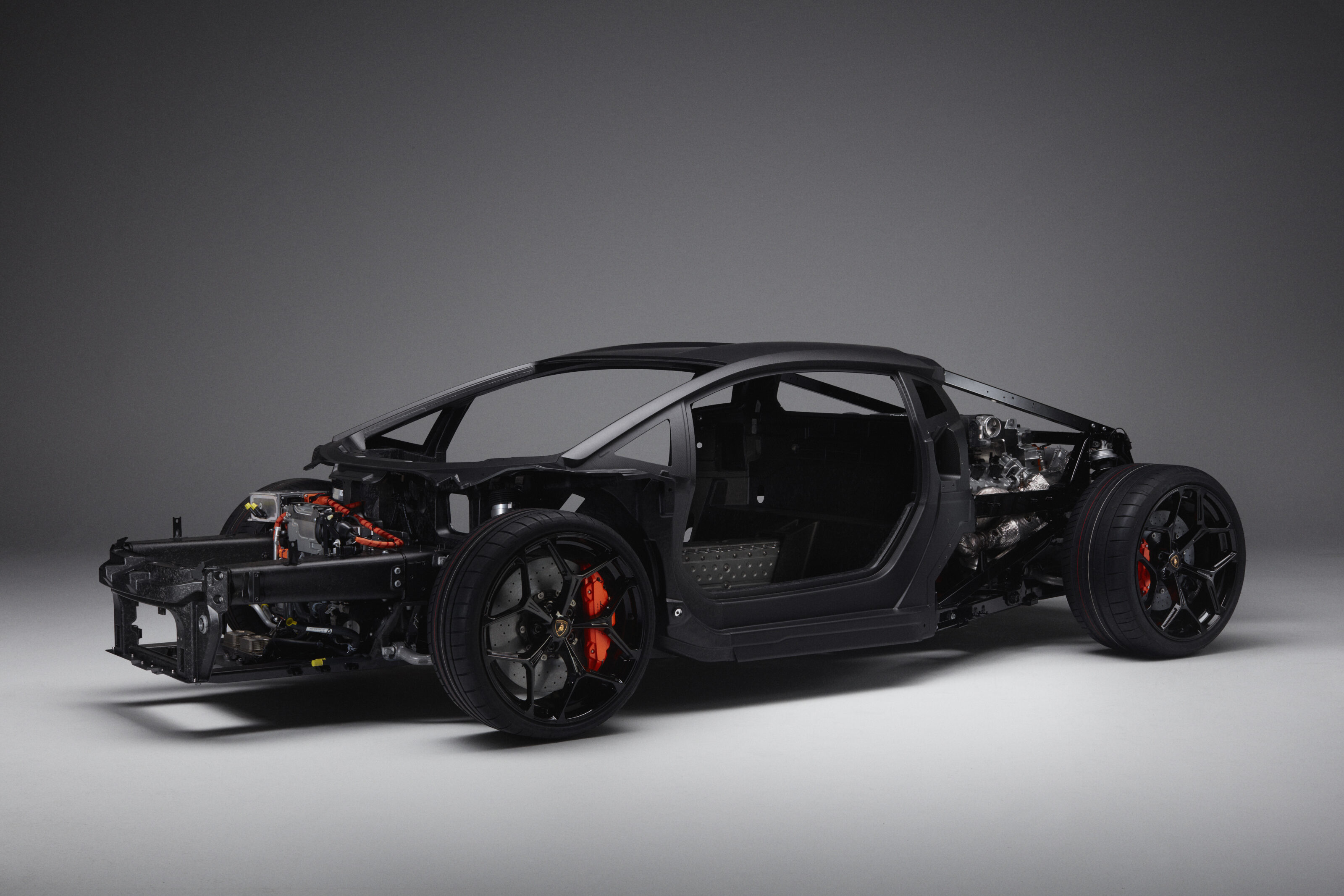
While the LB744’s rear ‘e-axle’ contributes to the braking force via battery regen, Lamborghini hasn’t forgotten about physical hardware.
Hiding behind the LB744’s rims are carbon-ceramic stoppers featuring ten-piston front calipers, which clamp vast 410 millimetre ventilated rotors. The rear calipers are four-piston units, which clamp 390mm rotors.
A stack of work has gone into the aerodynamics too, with Lamborghini claiming a 60 per cent improvement in efficiency, while brake-cooling has also been considered with NACA ducts to direct cooling air-flow over the stoppers.
Lamborghini will unveil the LB744 in full on March 30.
Our original story, below, continues unchanged.
The story to here
March 14: Ahead of the 746kW V12 hybrid ‘LB744’ reveal next month Lamborghini has dropped another teaser.
This time, the Aventador successor’s carbon fibre ‘monfuselage’ structure is on show – promising to cut weight and up stiffness.
Using innovative forged carbon-fibre construction in the frontal area, the LB744’s front structure is 20 per cent lighter and 25 per cent stiffer than the Aventador’s aluminium item.
Forged carbon fibre differs from the traditional pre-preg carbon sheets that are laid into a mould and baked in an autoclave, instead using shorter fibres soaked in resin for greater strength.
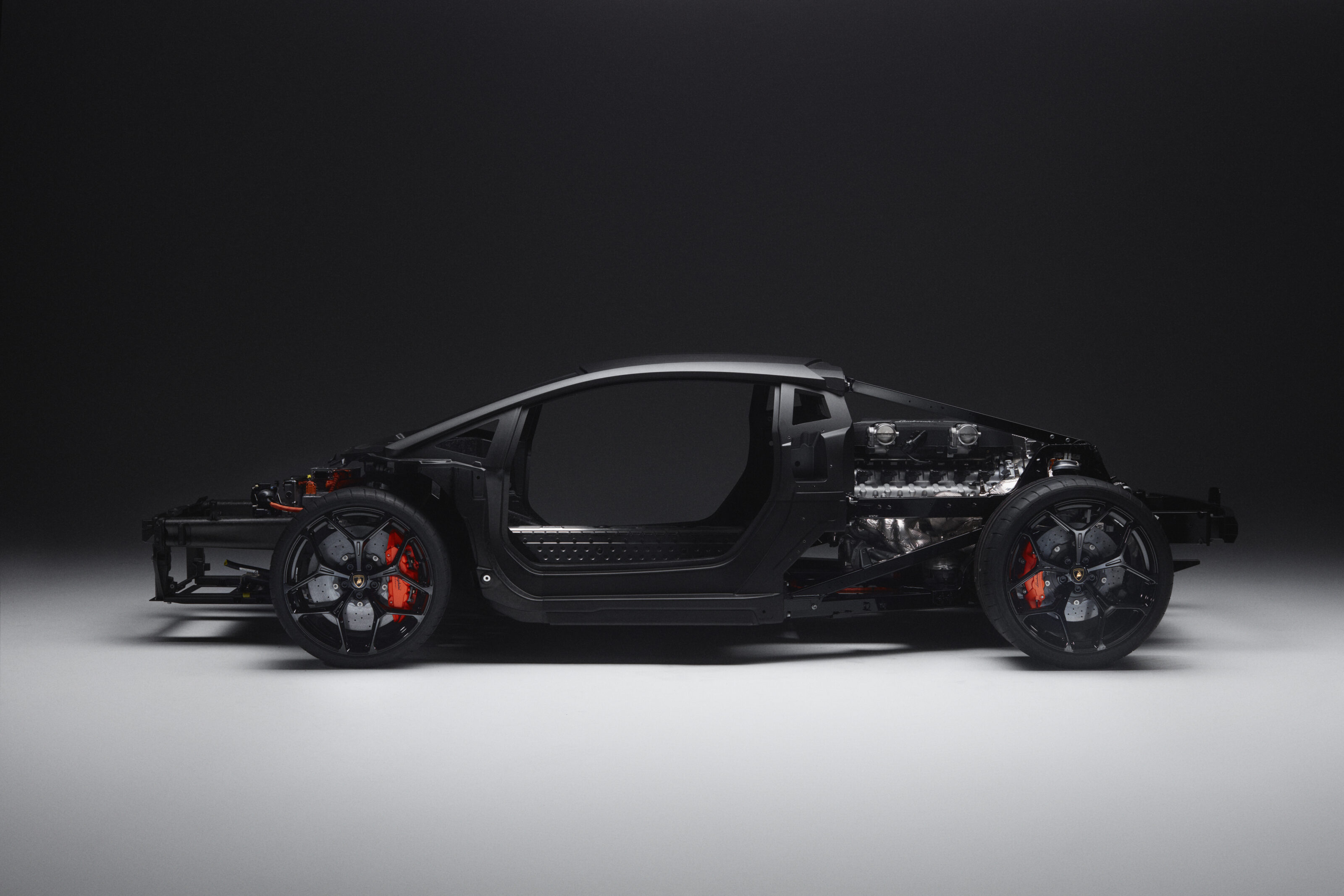
The rest of the chassis is made from exotic materials, too, with pre-preg carbon fibre used in the roof, and the ‘monolithic rocker ring’ (that connects the front structure, A-pillar and tub) fabricated from carbon-fibre reinforced plastic (CFRP).
The batteries for the V12 hybrid powertrain will run through the centre of the LB744, with aluminium alloy used for the rear structure. The powertrain and suspension hang off a pair of hollow-cast aluminium alloy domes for strength.
Lamborghini says that the heavy reliance on carbon-fibre will not only make the new chassis 10 per cent lighter overall but also make it more environmentally-friendly to produce than the Aventador.

Our original story, below, continues unchanged.
The story to here
March 8: Lamborghini’s Aventador successor has been treated to a 746kW V12 hybrid engine that revs beyond 9000rpm.
A 746kW plug-in hybrid V12 is, on the surface, a peculiar concept. Taking an un-downsized petrol-slurping powertrain and mating it with electric motors sounds antithetical, but it’s something engine-lovers should celebrate. The V12 retains its crown in the motoring world.
One could argue that Ferrari’s Purosangue ‘SUV’ – a car you’d think would be tailor-made for a downsized V8 and electrification – picking up a V12 is what gave Lamborghini licence to develop a plug-in hybrid around an all-new 12-cylinder petrol engine.
Lamborghini has been here before, though, effectively using the Sián as a testbed when it mated the 6.5-litre V12 to a small 25kW electric motor.
The plug-in powertrain in the Aventador replacement – codenamed ‘LB744’ for now – is a whole lot more complicated. It will pump out 746kW – that’s 1000hp – and use 30 per cent less fuel than Aventador. It’s built around a new ‘L545’ 6.5-litre V12 with three electric motors, and a bespoke dual-clutch transmission.
With a 3.8kWh lithium-ion battery, the LB744’s electric driving range will be limited. Lamborghini has not claimed a driving range yet, but expect between 10-20 kilometres. The supercar will be front-wheel-drive in EV mode by default, but when needed the rear electric motor can kick in to limit slip.

How does Lamborghini’s hybrid powertrain work?
Sure, the electronics are exciting, but Lamborghini isn’t just reusing any old V12 in its PHEV (unlike the Mitsubishi Outlander’s old 2.4), instead the new L545 mill drops 17 kilograms in weight compared to the Aventador’s dry sump unit, and is spun 180-degree in the chassis.
Alone, the V12 produces 607kW at 9250rpm – 33kW more than Aventador Ultimae – and 725Nm at 6750rpm. The new engine also runs a higher compressions ratio, now 12.6:1 instead of 11.8:1.
To reach the 746kW peak, the V12 needs to work in conjunction with three electric motors: a pair of 110kW/350Nm items are fitted on each front axle, and a third 110kW/150Nm item sits atop the new eight-speed dual-clutch transmission.
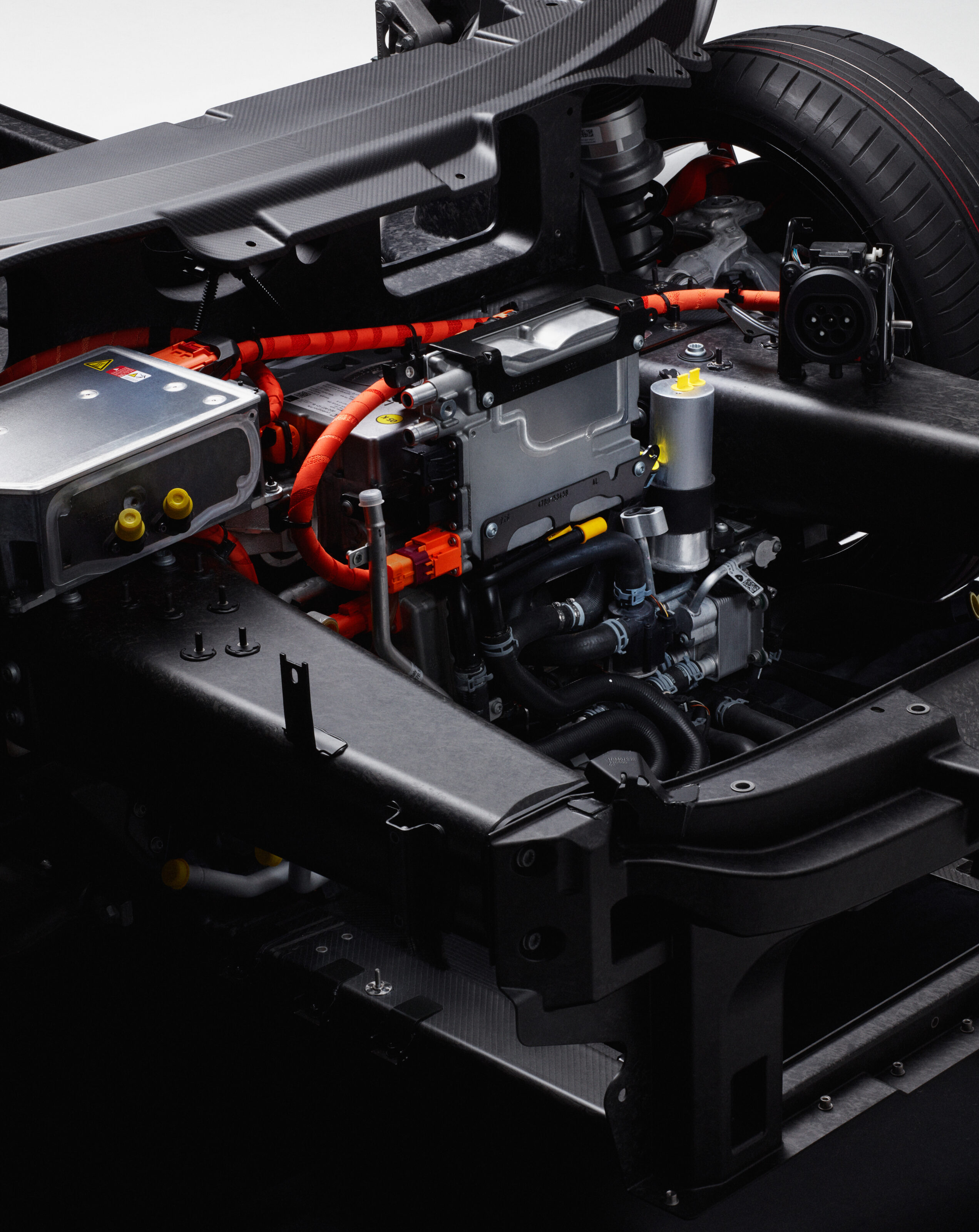
This should bestow finite torque vectoring capability on the front axle, which is powered exclusively by those two electric motors – there’s no physical connection between the front Pirellis and the V12.
The transversely-mounted eight-speed dual-clutch transmission was developed to cope with the V12’s 725Nm torque figure. It’s also a rare packaging choice, with only two other Lamborghinis adopting a transverse ’box, the 1966 Lamborghini Miura and the 2020 Essenza SCV12.
With two gear shafts rather than the usual three, Lamborghini has managed to make the 193kg transmission lighter than the Huracan’s seven-speed ’box, too. Another trick to lower weight is the lack of physical reverse gear – the front electric motors power the LB744 when it needs to crawl backwards.

According to Lamborghini, the decision to develop a bespoke eight-speed ’box cam from “the desire to create a unit that provides everything needed for sporty driving such as fast gear shifts, while the inclusion of an eighth ratio helps optimise fuel consumption and drivability while cruising.”
A 3.8kWh lithium-ion battery pack is housed within the transmission tunnel, right in the centre of the LB744’s chassis. This helps distribute weight more naturally for a supercar, rather than having it all set low and wide in the chassis like a BEV would.
You can charge the battery using a home wall socket, or up to 7kW AC current. It’ll take 30 minutes for full recuperation. The V12 engine can also run as a generator for the battery under full acceleration, and the front electric motors provide regenerative braking.
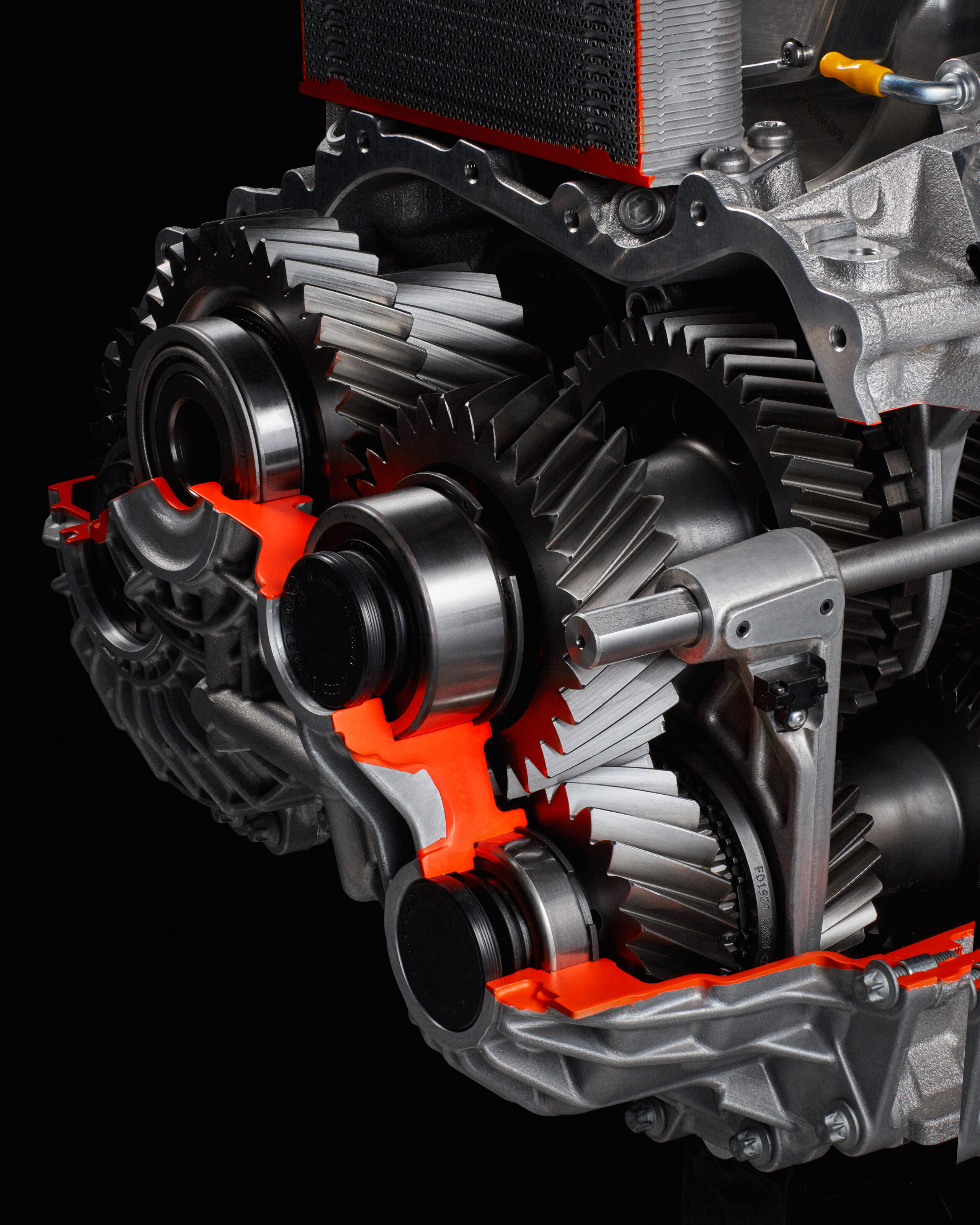
What does this mean for the future of Lamborghini?
Lamborghini’s new plug-in hybrid powertrain will feature in the Aventador’s successor as the first of four new models by 2030.
The LB744 is expected to be followed up by a new Huracan – also utilising plug-in hybrid power – as well as a new electrified generation of Urus SUV.
By 2028, the Bologna-based sports car specialist will reveal its first ever fully-electric vehicle, but promises that the plug-in hybrid-augmented multi-cylinder engines will live onto at least 2030.




